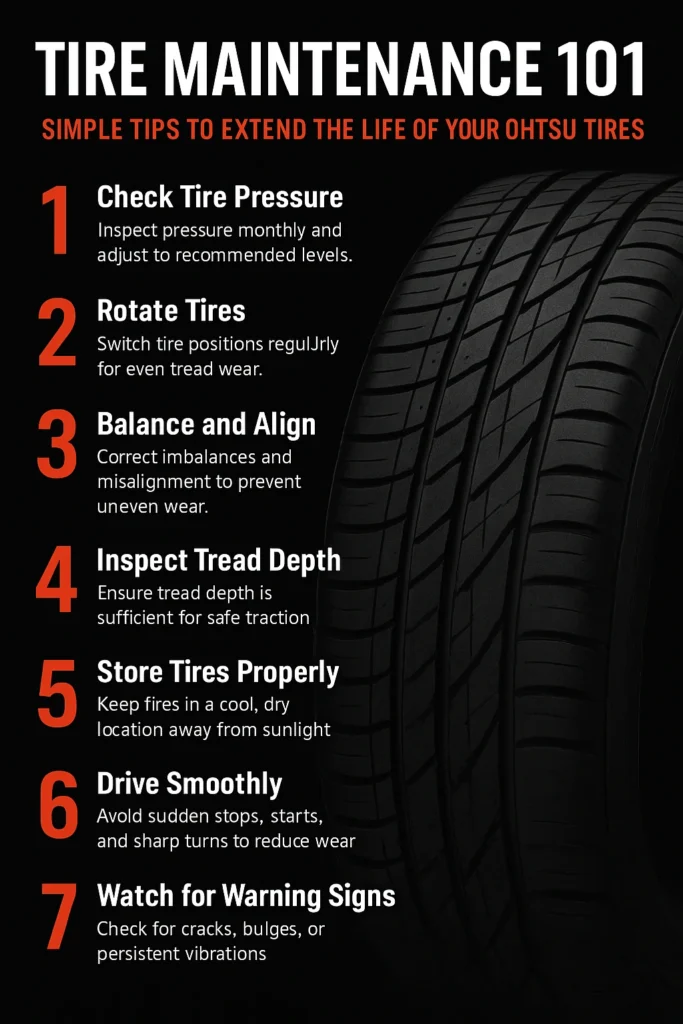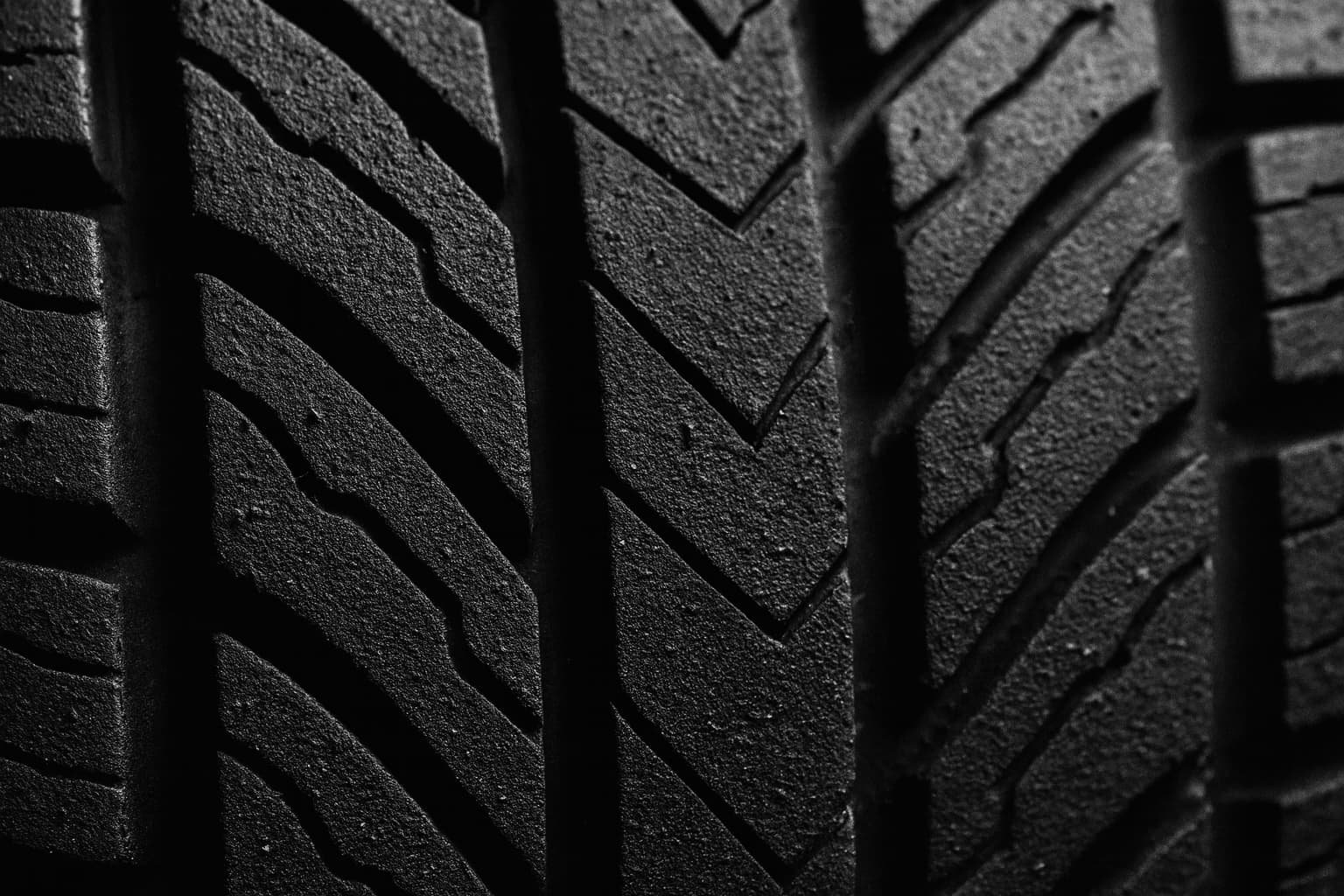Buying a new set of tires is an investment, and for most drivers, it’s not something they want to do often. Tires affect every aspect of your driving experience—from safety and fuel efficiency to comfort and handling. That’s why proper tire care is essential.
Ohtsu Tires are known for their combination of affordability and reliability, but even the best-designed tires can wear out prematurely if neglected. The good news? With just a little maintenance, you can dramatically extend the life of your Ohtsu tires, saving money while ensuring a safer and smoother ride.
This guide breaks down the most important steps in tire care—explained in clear, simple language—so you can keep your tires in top shape.

Why Tire Maintenance Matters
Neglecting your tires doesn’t just reduce their lifespan; it can also create risks on the road. Poorly maintained tires can:
- Lose traction in wet or snowy conditions.
- Wear unevenly, making your car harder to handle.
- Reduce fuel economy, costing you more at the pump.
- Lead to blowouts or flats, leaving you stranded.
By adopting simple habits, you’ll avoid these problems and get the most out of your Ohtsu tires.
1. Check Tire Pressure Regularly
One of the easiest and most effective maintenance steps is checking tire pressure.
- Why it matters: Underinflated tires create more rolling resistance, leading to poor fuel economy and faster tread wear. Overinflated tires reduce traction and make the ride harsh.
- How to check: Use a reliable tire pressure gauge at least once a month. Compare your results with the recommended PSI listed in your vehicle’s owner’s manual or on the driver’s side door placard.
- Pro tip: Check pressure when the tires are “cold” (before driving more than a mile or two).
For example, Ohtsu’s FP7000 touring tire maintains its comfort and tread life best when kept at proper pressure.
2. Rotate Tires Consistently
Not all tires wear at the same rate. Front tires usually wear faster because they handle steering and more braking force.
- Why it matters: Rotating tires ensures even tread wear, extending their lifespan.
- When to rotate: Every 5,000–7,000 miles, or during every other oil change.
- Patterns: Most vehicles use a front-to-rear rotation pattern, but always confirm with your car’s manual.
Keeping up with rotations helps models like the ST5000 SUV tire last longer under heavy loads.
3. Balance and Align Your Wheels
Two often-overlooked services—balancing and alignment—play a huge role in tire performance.
- Balancing: Prevents vibrations caused by uneven weight distribution. Without it, your tires wear unevenly.
- Alignment: Ensures your wheels point in the correct direction. Misalignment leads to pulling to one side and rapid tread wear.
If you notice your Ohtsu FP8000 performance tires vibrating at highway speeds, balancing could be the issue. If your steering wheel is crooked while driving straight, alignment is likely off.
4. Inspect Tread Depth
Tread is what keeps your car connected to the road. Worn tread means reduced traction, especially in rain or snow.
- Minimum legal depth: In the U.S., 2/32 of an inch.
- The penny test: Insert a penny with Lincoln’s head facing down. If you see all of his head, it’s time to replace your tires.
- Better safe than sorry: Replace earlier (around 4/32”) if you often drive in wet climates.
Ohtsu’s AT4000 all-terrain tire has an aggressive tread design. Inspecting it regularly ensures you get the grip you need both on- and off-road.
5. Store Tires Correctly
If you use seasonal tires or keep an extra set, proper storage is key.
- Cool, dry, and dark place away from direct sunlight.
- Store vertically on a rack rather than stacking if possible.
- Use tire bags or covers to reduce exposure to oxygen and moisture.
Improper storage can dry out the rubber, even in high-quality tires.
6. Drive Smoothly
Your driving habits directly impact tire life.
- Avoid hard braking unless necessary.
- Don’t accelerate aggressively.
- Steer smoothly and avoid hitting curbs or potholes.
Smooth driving helps maximize tread life across all Ohtsu models.
7. Pay Attention to Warning Signs
Even with the best care, tires eventually need replacement. Watch for:
- Cracks or bulges on the sidewalls.
- Persistent vibration despite balancing.
- Uneven wear patterns.
- Noticeable decrease in traction.
If you spot these issues, it’s safer to replace rather than risk a failure.
The Ohtsu Advantage: Easy Maintenance, Better Value
Ohtsu tires are designed with everyday drivers in mind. Their tread patterns, rubber compounds, and construction make them durable and budget-friendly. By following the steps above, you’ll not only extend their lifespan but also ensure that you’re getting the maximum return on your investment.
Consider this: a well-maintained set of FP7000 all-season touring tires can last tens of thousands of miles longer than a neglected set. That difference could mean years of extra use and hundreds of dollars saved.
Conclusion
Tire care doesn’t have to be complicated. By checking air pressure, rotating regularly, balancing and aligning, monitoring tread depth, storing properly, and driving smoothly, you can dramatically extend the life of your Ohtsu tires.
Whether you’re driving the all-season FP7000, the performance-oriented FP8000, the SUV-ready ST5000, or the adventurous AT4000, these simple steps will keep you safer, save you money, and make every mile smoother.
Your tires are an investment. Treat them right, and they’ll take care of you—mile after mile.


